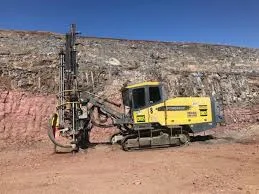Ground source heat pumps (GSHPs) have gained popularity as an efficient and eco-friendly method of heating and cooling buildings. However, the successful installation of GSHPs relies heavily on the construction of high-quality boreholes. Split anchor drilling has emerged as a revolutionary technique that supports the building of these essential holes. In this blog, we will explore how split anchor drilling facilitates the construction of ground source heat pump holes, highlighting its benefits and applications.
Understanding Ground Source Heat Pump Systems
Before delving into the role of split anchor drilling, it is essential to grasp the fundamentals of ground source heat pump systems. GSHPs harness the stable temperature of the ground to heat or cool buildings. They work by circulating a fluid through a network of pipes buried beneath the ground. In the winter, the fluid absorbs heat from the ground and transfers it to the building, while in the summer, it extracts heat from the building and disperses it into the ground.

The Importance of Proper Borehole Construction
The efficiency and performance of GSHPs rely heavily on the construction of high-quality boreholes. Boreholes serve as the primary means of transferring heat between the ground and the heat pump system. Proper construction ensures optimal heat exchange and reduces energy consumption. Factors such as borehole depth, diameter, and thermal conductivity of the surrounding soil must be carefully considered during the construction process.
The Difference Between Split Anchor Drilling And Traditional Drilling
Split anchor drilling changes the construction of ground source heat pump holes and offers many advantages over traditional drilling methods. The technique involves the use of a powerful hydraulic drilling rig equipped with specially designed split anchors. These anchors stabilize the borehole wall, preventing collapse and maintaining a consistent diameter throughout the drilling process.
Enhanced Safety and Stability
One of the primary benefits of split anchor drilling is its enhanced safety and stability. The split anchors provide immediate support to the borehole walls, preventing collapses and minimizing the risk of accidents. This ensures a secure working environment for the drilling crew and reduces the chances of delays or interruptions during the construction process.
Consistent Borehole Diameter
Maintaining a consistent borehole diameter is crucial for efficient heat transfer and the installation of the GSHPs. Split anchor drilling ensures a precise and uniform hole diameter throughout the entire drilling process. This consistency allows for a snug fit between the ground loop pipes and the borehole walls, maximizing the heat exchange area and improving the overall efficiency of the system.

Flexibility in Challenging Geological Conditions
Ground conditions can vary significantly from one project site to another. Split anchor drilling offers flexibility in accommodating diverse geological conditions. The technique can be employed in various soil types, including sand, clay, and rock formations. By adapting to different ground conditions, split anchor drilling enables the construction of GSHP holes in a wider range of locations, making ground source heat pumps a viable option for more buildings.
Time and Cost Efficiency
Split anchor drilling proves to be time and cost-effective compared to traditional drilling methods. The stability provided by the split anchors eliminates the need for costly casing materials, reducing both material and labor expenses. Additionally, the precise drilling technique minimizes the risk of drilling errors, reducing the need for subsequent repairs or modifications. These factors contribute to overall project cost savings and shorter construction timelines.

Conclusion
Split anchor drilling has revolutionized the construction of ground source heat pump holes, enhancing safety, stability, and efficiency. By providing immediate support to borehole walls and maintaining a consistent diameter, this technique ensures optimal heat exchange and improves the overall performance of GSHP systems. With its flexibility in challenging geological conditions and cost-effective nature, split anchor drilling is poised to play a significant role in the widespread adoption of ground source heat pumps. As the demand for sustainable heating and cooling solutions grows, split anchor drilling will continue to support the construction of high-quality GSHP holes, contributing to a greener future.








